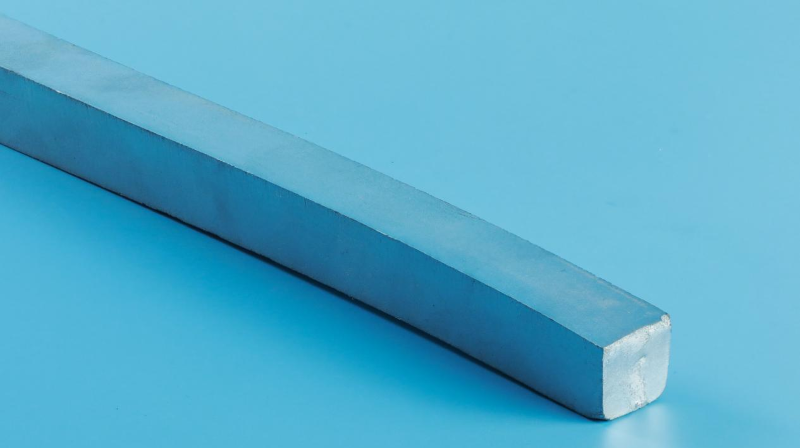What Is the Principle of Molybdenum Metal Bar in the Manufacture of Vacuum Devices?
The principle of molybdenum metal bar in the manufacture of vacuum devices is mainly based on the unique physical and chemical properties of molybdenum matching the working requirements of vacuum devices. The following is an analysis from the material properties, device working environment and specific application principles:
I. The core physical and chemical properties of molybdenum metal bar and the adaptability of vacuum devices:
1. High temperature resistance and low thermal volatility:
Features: The melting point of molybdenum is as high as 2620℃, and the sublimation rate at high temperature is extremely low (for example, the sublimation rate at 1500℃ is only 1/100 of tungsten).
Principle: When vacuum devices (such as electron tubes and klystrons) are working, the electron beam bombarding the electrode or cathode will generate a lot of heat (up to 1000~1500℃). Molybdenum metal bar is not easy to melt or volatilize in this environment, avoiding material loss and causing a decrease in vacuum, while maintaining the stability of the device structure.
2. Good electrical conductivity and thermal conductivity:
Characteristics: The electrical conductivity of molybdenum is about 3.8×10⁷ S/m (20℃), and the thermal conductivity is 135 W/(m・K) (25℃), which has both electrical conductivity and heat dissipation capabilities.
Principle:
When used as an electrode or lead, molybdenum metal bar can efficiently transmit current and reduce energy loss;
As a heat dissipation component, it can quickly remove heat from high-temperature areas such as cathodes and anodes to avoid local overheating and device failure.
3. Thermal expansion coefficient matching with packaging materials:
Characteristics: The thermal expansion coefficient of molybdenum is 5.2×10⁻⁶/℃ (20~1000℃), which is close to glass (4~8×10⁻⁶/℃) and ceramics (such as alumina ceramics are 7.2×10⁻⁶/℃).
Principle: Electric vacuum devices are often packaged in glass or ceramics. When the temperature changes during operation, the difference in thermal expansion between molybdenum metal bar and the packaging material is small, which can avoid sealing failure caused by stress concentration (such as glass cracking and air leakage).
4. Chemical stability and low gas release:
Features: Molybdenum is not easy to react with oxygen and water vapor at room temperature, and the gas release is extremely low when baked at high temperature in a vacuum (such as the device exhaust stage).
Principle: Electric vacuum devices need to maintain a high vacuum degree below 10⁻⁴ Pa. If the material releases gas (such as H₂, CO₂), it will destroy the vacuum environment. The chemical stability of molybdenum can keep the vacuum degree of the device unaffected when it works for a long time.
5. Moderate mechanical strength and processing performance:
Features: The tensile strength of molybdenum is about 500 MPa at room temperature, and it can be made into high-precision bars with high surface finish through rolling, stretching and other processes.
Principle: molybdenum metal bar can be processed into a thin diameter (such as φ0.1~10 mm) or a complex shape (such as a spiral shape, with a step structure), which meets the needs of precision structures such as electrode support and lead connection in vacuum devices, while maintaining mechanical strength at high temperatures (such as a tensile strength of about 200 MPa at 1000°C).

2. Specific applications and working principles of molybdenum metal bar in vacuum devices:
1. As a cathode support and heater skeleton:
Application scenarios: cathode components of electron tubes and X-ray tubes.
Principle:
Molybdenum metal bar supports oxide cathodes (such as BaO-SrO coatings), is resistant to high temperatures and does not react with coating materials;
When used as a heater (filament) skeleton, the high melting point of molybdenum can withstand the high temperature (such as 1200°C) after the filament is powered on, and its conductivity ensures heating efficiency.
2. Acting as electrode and lead materials:
Application scenarios: grid and anode leads of triodes and tetrodes.
Principle:
When molybdenum metal bar is used as an electrode, it can stably conduct electricity at high voltage (such as thousands of volts), and has high electron transmittance (small electron beam blocking), reducing energy loss;
When used as a lead, it is sealed with the shell through the "molybdenum-glass sealing" technology, and vacuum sealing is achieved by using thermal expansion matching.
3. Used for shielding and heat dissipation components:
Application scenarios: thermal shielding covers and heat sinks of klystrons and magnetrons.
Principle:
Molybdenum metal bar is processed into sheets or cylinders, which serve as a heat shielding layer to block high-temperature radiation and protect surrounding components;
Using high thermal conductivity, the heat of high-temperature components such as the anode is transferred to the heat sink and discharged through air cooling or water cooling.
4. Role in vacuum sealing and structural support:
Application scenarios: internal support structure and sealing parts of vacuum tubes.
Principle:
Molybdenum metal bar is connected to other metal parts by welding (such as electron beam welding) or brazing to form a rigid support and maintain the precise spacing of the electrodes inside the device (such as the spacing between the gate and the cathode affects the amplification performance of the electron tube);
When sealing with ceramic or glass, the "Kovar alloy-molybdenum" transition connection is used (the thermal expansion coefficient of Kovar alloy is closer to that of molybdenum) to further reduce the sealing stress.
As a molybdenum product technology enterprise, we use advanced automation, process technology and environmental protection equipment, and have good environmental governance effects. At the same time, we have a domestic advanced laboratory testing center. In addition, the company is mainly committed to the research and development and production of molybdenum deep processing products, and strives to form a deep processing industry chain integrating "ammonium molybdate-pure molybdenum trioxide-molybdenum powder". The factory is located at No. 52, Zhongxin Road, Taihe District, Jinzhou City, Liaoning Province, China. The factory covers an area of 66,700 square meters, and the first phase has a construction area of 28,500 square meters. Welcome to our factory to visit our production process.




